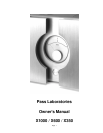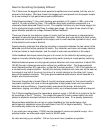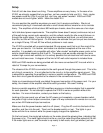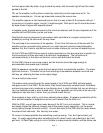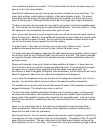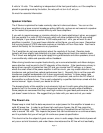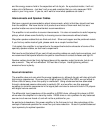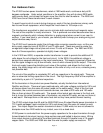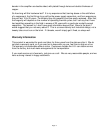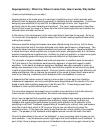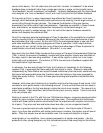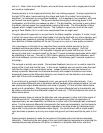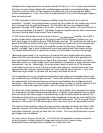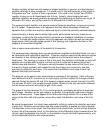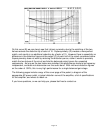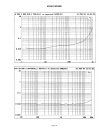Page 8
Fun Hardware Facts
The X1000 has two power transformers, rated at 1500 watts each, continuous duty at 85
degrees centigrade. Under actual conditions in the amplifier, they will do about 2000 watts
continuously each, and at least half again more than that for short durations. The X600 and
X350 have one of these transformers in each chassis.
To avoid huge inrush of current during charge up, each of the two transformer primary coils
has its own inrush suppressor, which keeps the inrush down to 100 amps or so.
The transformers are potted in steel cans to minimize both mechanical and magnetic noise.
The rest of the amplifier is mostly aluminum. This is preferred over steel because steel has a
magnetic nonlinearity which induces distortion in analog signal when current is run near its
surface. If you have steel in your chassis, you definitely want to keep your analog wiring and
output devices away from it.
The X1000 has 8 computer grade (the old large style computer capacitor cans, not the new
dinky ones) capacitor cans at 25,000 uF and 75 volts each. These are used to create the
unregulated output stage rails at plus and minus 75 volts at 30 amps. The X600 and X350
have 6 of these capacitors, operated at slightly lower voltages.
In the X1000 and X600, a separate smaller transformer is used to provide the additional 20
volts above the rail voltage for the front end circuit. In the X350, this additional voltage is
derived from separate windings on the main transformers. This supply is passively filtered so
that the ripple voltage is only a few millivolts, none of which shows up at the output. This extra
front end supply lowers the distortion and noise of the system, and allows the front end to
swing the output stage rail-to-rail with losses on the order of only a volt or so, extracting every
last possible watt.
The circuit of the amplifier is completely DC, with no capacitors in the signal path. There are
also no slew rate limiting capacitors in the circuit. The high frequency rolloff of the amplifier is
controlled by a pair of 4.7 picofarad capacitors.
All the transistors in the product are power Mosfets, actually Hexfets from International
Rectifier and Harris. These are hyper-matched parts, with gate voltages matched to 0.5% and
all devices taken from the same lot codes (made on the same wafer). Most of the front end
transistors, the current sources and cascode devices, are rated at 200 volts and 150 watts.
We run them at about 2.5 watts each. The speed critical actual gain devices in the front end,
that is to say the actual balanced pair of transistors, are rated at 20 watts, and we run them at
a watt each. We keep them on the same heat sink so they have perfect thermal tracking.
The X1000 output stage has 80 and the X600/X350 have 48 output Mosfet power transistors in
TO-3 metal packages, again matched to 0.5% and drawn from the same lot codes for each
type. The output stages can sustain transients of about 10,000 watts, but are not allowed to
dissipate more than 2400 watts for any instant, even into a dead short.
X1000 power is conducted from the power supply capacitors to the output transistors through
formed sheets of aluminum having a large surface area and bolted to device cases. Wiring
from output devices is attached to the output terminals through 24 parallel runs of 10 gauge
copper cable. The X600 and X350 also use this wire for power supply connections. PC



